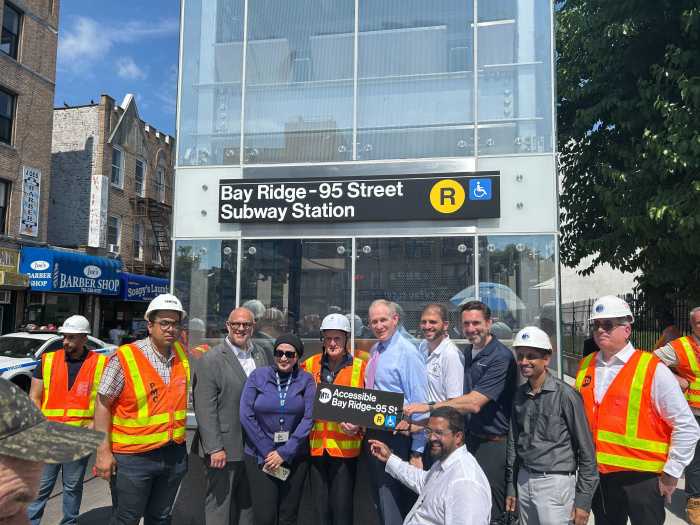It’s been more than two decades since the idea of creating a science lab in the shadow of the Verrazano Bridge was first broached, and advocates for the proposal are still fighting to turn their dream into a reality.
The goal – enunciated initially by Tom Greene, then an assistant principal at Fort Hamilton High School and now an adjunct instructor of oceanography at Kingsborough Community College – is to build a marine science lab on historic Denyse Wharf, owned by the U.S. Army and which the Army is willing to lease to the city for a dollar a year.
While, before 9/11, it seemed like Greene’s brainchild would actually come to fruition, in the wake of the terrorist attack funding that had been designated for the project was lost.
Nonetheless, while the cost of the project has increased from about $10 million in 2001 to as much as $18.5 million now, Greene has persevered.
It hasn’t been easy. Most recently, the city’s Department of Education (DOE) rebuffed a request by Representative Michael McMahon to reconsider the idea.
In an October 23, 2009 letter to McMahon, Barbara Morgan, the agency’s federal legislative affairs director, recalled that a feasibility study had previously been done. While, she said, “The study indicated the center could be built, it also indicated that there were many obstacles that would drive up construction costs, making this site impractical.”
Among the issues, Morgan said, were, “the site’s inaccessibility to vehicles which would require the construction of a new vehicle access road, the lack of utilities which would require running newutility lines out to the site, and the isolation of the site which would require increased security.”
Nevertheless, while DOE has continued to reject the idea – which has grown into a regional lab that could be used by public and private school students from areas beyond Bay Ridge, as well as being open, at times, to the general public – local activists have continued to support it enthusiastically.
Recently, in fact, delegates to the Bay Ridge Community Council (BRCC) voted to write the DOE to express their long-standing backing for the project, said Andrew Windsor, the group’s president. BRCC was one of the first groups to come on board in support of the project, back in 1998, he recalled.
“You’d think it would be something of a no-brainer,” Windsor remarked. While the lab would be costly, he noted, “In today’s budget, it’s really just a drop in the bucket.” And, given the number of students it could serve, “What better way to use the money?” he asked.
Just a couple of months earlier, Windsor recalled, members of Community Board 10 gave the project the number two place on their annual list of capital priorities – their method of signaling to the powers-that-be that the project would be an extremely important one for the area. CB 10 has been on record as being in support of the project since 2003.
The importance of the science lab project, said Greene, revolves around the value of science education, an area in which the United States is “woefully behind the rest of the world,” ranking 13th or 14th as of 2008, Greene said.
“All the European and Asian countries are ahead of us in math and science, and there’s a concern that our students will not be able to handle new technology,” Greene asserted, adding that, in New York City, there is “an insufficient number of labs to meet the needs of the students. Technology is not there in the school system to bring students up to the standards the federal and state governments want.”
The lab was projected to cost around $10 million in 2001, he recalled; even with the higher price tag, he said, it would be money well-spent in terms of providing local students with a hands-on science experience.
In addition, objected Greene, “They don’t say why it’s not cost-effective.” He noted that DOE has spent larger sums on other facilities, such as Sunset Park High School. “What makes that cost-effective? If there’s a reason for a building, put it up, because we need the building.
“They say it’s not accessible,” Greene went on, accusing DOE of floating “bogus arguments.” With a marine science lab, a shorefront locale is essential, he stressed; Denyse Wharf, he added, is actually reasonably easy to reach. “It’s a five-minute walk from Shore Road. Three or four buses stop there, and there’s the subway at 95th Street.
“It’s time to sit down with DOE,” he continued. “There are questions we want them to answer. The School Construction Authority said it was feasible in 2001, after they did a study. They said they recommended building it on a barge, and fixing up the site, which is landmarked.”
McMahon agreed. “I do think it’s a great idea,” he told this paper, “one that would serve the children well. I believe DOE is saying it’s impractical without really evaluating it, and I would press them to give it a really good look.”






















